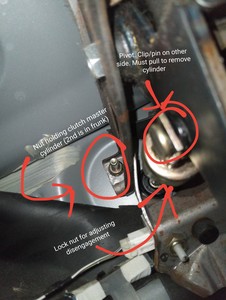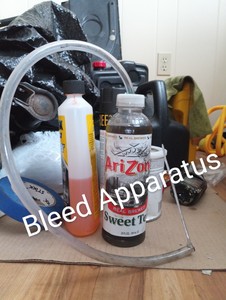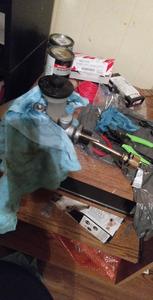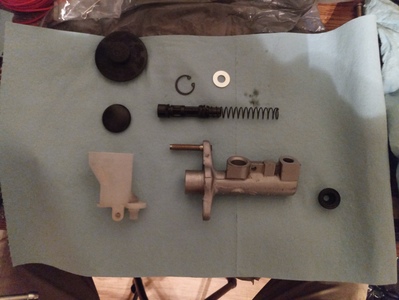Hey Guys,
Just to start this off, my clutch friction disc is in good condition. I can still get tire spins and have never had a slip.
I was starting from a stop when my clutch Pedal failed to return from the floor. I had to pull it back up. No floor mat interfering. Clutch Pedal was noticeably softer. Finished last 2 deliveries for the night with some more intermittent failure and slow return of the pedal. Clutch still grabs fine, disengagement issues are the name of the game. When I hold the clutch in for more than like 2 secs, have to pull the pedal up.
Checked the clutch fluid reservoir. There are bubbles in it. Not a crazy amount, but there are bubbles. Fluid level was the same. Checked under the car no leaks. There was no buildup to this or sudden noise. Just all of a sudden happened.
Tomorrow, I am going to flush the entire clutch line and see if I have any improvement. I would appreciate you all throwing any ideas my way of what this may be. I'm thinking, either my fluid is super old, or my clutch master cylinder is going out. Or a combo of both.
Thanks in advance.
Update with some photos:
Definitely sounds like a bad seal in the BMC!
2000 Toyota MR2 Spyder, 2021 Lexus UX 250h F Sport
Ordered this part#: 04311-12110
Clutch Master Cylinder rebuild kit, Toyota
$43 @ my local toyo dealership
Luckily, they have one close enough that I can get it tomorrow. Will update with results
Don't forget about the slave cyl. ..... better have a look .
@phats. Slave ended up being fine. No fluid pooling behind dust boot, and it wasn't seized. No leakage. Thanks for reminder to check though.
Going to update with pics later but managed to reinstall. Still need to adjust engagement point, I have it wayyyyyyy to high.
Took about 2 bottles of Toyota dot3 to flush system with friend working pedal and me under the car. Bled the slave by squeezing it with finger and opening/ closing valve. Clutch Pedal feels better than when I bought the car.
Side note, I didn't realize how bad the pedal return was before until after this repair haha
With a new master or rebuilt one it needs to be filled with some fluid and tilted to get the hard to reach air out before it gets installed on the car.
I did this long ago when I replaced a good working master with a new one but it ended up being the clutch that was causing the odd clutch behavior. I sill have my old one and might just rebuild it when the time comes.
So I did bench bleed it, by working the cylinder with the reservoir filled before putting in on the car. My issue was a lot of air was introduced into the line when removing it in the first place. Out clutch line attaches on the top of the cylinder and has a lot of line at a higher height than the connection. It all drained out and sucked air. I should have found something to wrap it with to prevent that
So I did bench bleed it, by working the cylinder with the reservoir filled before putting in on the car. My issue was a lot of air was introduced into the line when removing it in the first place. Out clutch line attaches on the top of the cylinder and has a lot of line at a higher height than the connection. It all drained out and sucked air. I should have found something to wrap it with to prevent that
That is typical once the reservoir goes dry and in your case there is nothing you can do to prevent that and have to go though the painful process of bleeding. The problem is at the slave where the air traps behind the piston. What I generally do is jack up one side a little higher then the other and I will physically push in the slave piston. Once its push in I will open the bleed valve for a second and the trapped air comes out and then I will quickly close it so no air gets sucked back in from the bleeder threads.
Its good to see that you are using Toyota Dot 3. That is the only brake fluid that works the best for me.
Yeah DOT 3 at the dealer is cheap enough. Plus, it's the only easily verifiable actual DOT 3. I've heard of DOT 4 being packaged as DOT 3 for some brands and the DOT3/4 bottles are mostly just DOT 4.
@devI started the bleeding process with a vacuum bleed and finished with conventional. This worked perfectly the first time.
@devI started the bleeding process with a vacuum bleed and finished with conventional. This worked perfectly the first time.
Unfortunately vacuum bleeding never worked well for me and would introduce air from the bleeder screws. Pressure bleeding from the other side is better but even that is a messy operation with too much wasted fluid. Pressure bleeders are great at first and then eventually rust out.
Since I switched to gravity bleeding it has been the easiest method and less mess and maybe an assist with the pedal to get it started from dry. The area behind the slave historically never worked well for I and others but just a simple push of the slave to get out the trapped air works every time and is easy to do. Few have had luck with out any issues doing it with what ever method they choose but I had to advised this to countless number of people over many years who had this difficulty when traditional methods failed them with wasted bottles of fluid.
Its not a hard thing to do just push in the slave using the fork and open the bleeder and it you can see the trapped air being evacuated. Everyones experience is different on what works.
Yeah DOT 3 at the dealer is cheap enough. Plus, it's the only easily verifiable actual DOT 3. I've heard of DOT 4 being packaged as DOT 3 for some brands and the DOT3/4 bottles are mostly just DOT 4.
I strongly believe that although it is cheap to buy Toyota DOT 3 it is a heavy duty brake fluid. It also has a borate ester in the formulation which is not present in typical DOT 3. It has a special polymer lubricant that other fluids do not have which caused owners of certain Toyota vehicles issues when they switched to a different fluid. It is the same fluid used in Toyota trucks and their luxury performance vehicle without any fade issues or advisories to switch to Dot 4. It would be nice if we had information on its wet and dry boiling points.
It is not known if this polymer lubricant or other parts of the formulation benefits us in anyway but since switching to a stronger pressure plate I have had issues with DOT 4 causing issues with clutch disengagement if its left in for about a year. With the Toyota fluid it seems to hold up well and both my clutch and brakes feel right. For a street driven application its the best choice.
@dev I only used vacuum to prime the system when I did my swap. Finished the bleed by pressing the clutch pedal.





